Our Ballet: Count Albert, Nikiya and Princess Florine in imperial and soviet styles - Vancouver Ballet Society
- Home
- Features 2020 - 2023
- Our Ballet: Count Albert, Nikiya and Princess Florine in imperial and soviet styles

By Robert Greskovic
Part four in Dance International’s series featuring the personal photo card collection of New York correspondent Robert Greskovic. Here, he compares images from the imperial and soviet eras of Russian ballet.
Count Albert, Giselle
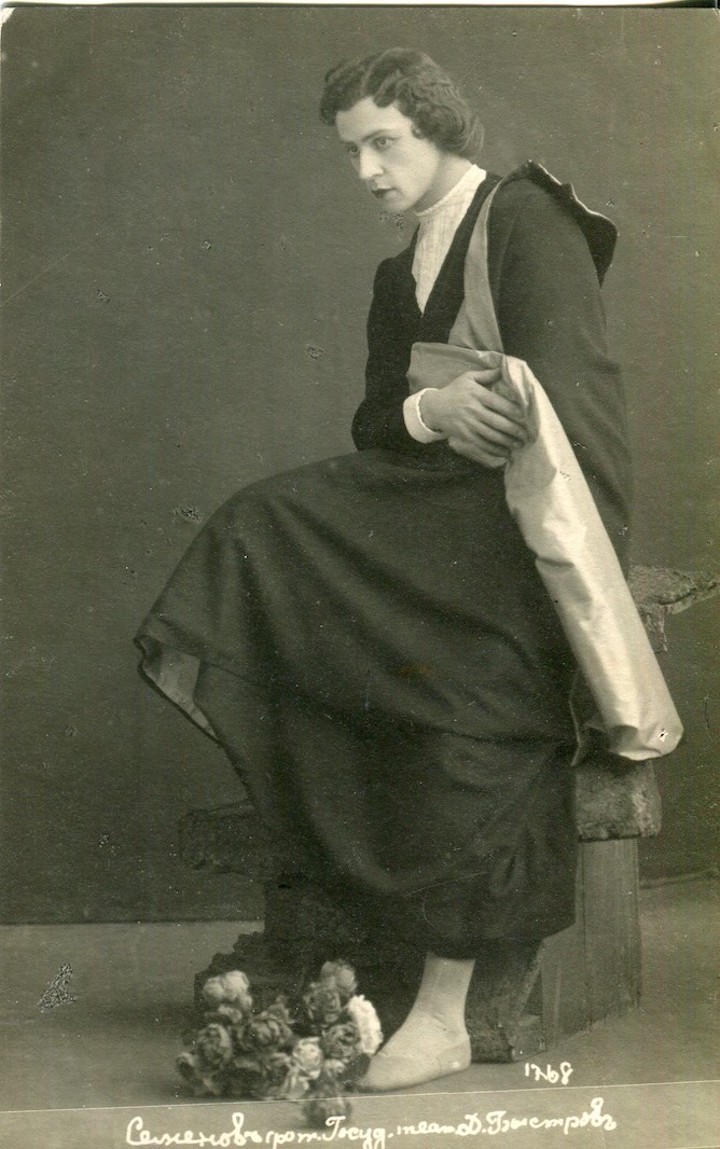
Danseur noble Viktor Alexandrovich Semyonov graduated from the imperial school in 1912, oddly the only man to do so that year. This photo of Semyonov is circa 1914, the year he made his debut in the role dancing opposite Lubov Egorova as his Giselle.
Semyonov’s curled wig and the courtly cape in which he is wrapped, along with his pensive, faraway expression, projects a poetic and romantic mood. His costuming is perhaps by Evgeny Ponomaryov, who was long the in-house costumer for the imperial ballet. The stepped studio prop on which Semyonov sits supports his static pose comfortably enough to accommodate the slow shutter speed of the era’s cameras.
The pose recalls the moment when Albert is at Giselle’s grave, where he leaves a bouquet. Again, the flowers are roses and not the lilies traditionally associated with the ghost of Giselle. When those lilies are carried by Albert, it weakens this association with Giselle, who uses them to indicate her phantom presence to her sorrowing lover.
Incidentally, in 1924 Semyonov taught evening courses, in which one of his students was Konstantin Sergeyev.
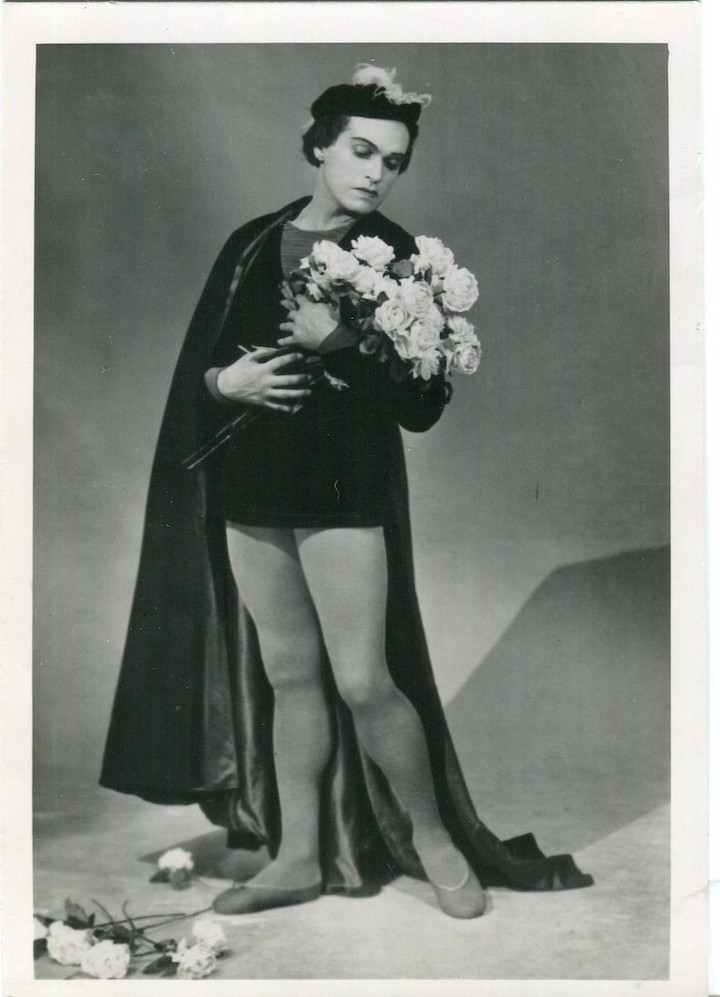
Konstantin Mikhailovich Sergeyev, People’s Artist of the USSR, is seen here in a 1960 photo card, published in Leningrad, as Count Albert (known outside Russia as Albrecht) in the Kirov Ballet’s Giselle. The production was credited as being staged after Coralli and Perrot’s 1841 staging, which was based on Petipa’s 1884 version.
Sergeyev is posed as if making his entrance in the ballet’s second act, carrying a bouquet of roses to place on Giselle’s grave. His costume, complete with floor-length cape and plumed hat, was likely designed by Tatiana Bruni for the Kirov Ballet in 1943, when the troupe was evacuated to Molotov (now Perm).
Today, the entrance to Adolphe Adam’s lachrymose music — in which Albert is accompanied either by an oboe or a violin — typically has him bareheaded and carrying a bouquet of drooping lilies. The lilies became the standard outside Russia after Serge Lifar adopted them in the 1930s for his Paris performances, presumably on a whim of his own.
Sergeyev’s downcast gaze suggests the attitude he adopted onstage for his character’s slow-paced entrance, alone on a stage that was set as a forest clearing. His one relaxed leg adds to the expression of melancholy, and the flowers at his feet are likely meant to suggest he is at Giselle’s grave. Natalia Dudinskaya was very probably his Giselle.
Nikiya, La Bayadère
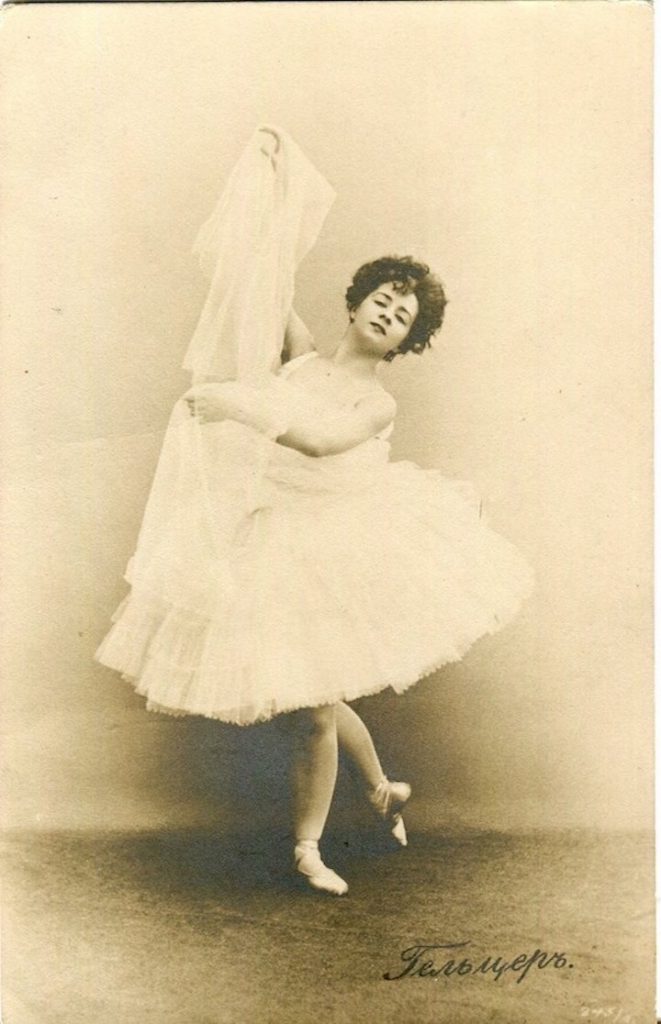
Ekaterina Vasilevna Geltser is shown in this studio photo as Nikiya, in the Kingdom of the Shades scene from La Bayadère, originally choreographed by Marius Petipa in 1877. Geltser was photographed in 1901, when the Moscow-based ballerina was substituting for the indisposed Matilda Kschessinska at the Mariinsky Theatre in St. Petersburg.
Geltser’s all-white costume is credited to Evgeny Ponomaryov. Her loose hair, without ornament, is not pulled back into the chignon soon to be standard for this role on stages around the world. She holds the gossamer scarf that Petipa worked into Nikiya’s solo, which was originally whisked away from her (on a hidden wire) before the solo came to its more space-eating end. Eventually, that flyaway effect was eliminated from performances of the scene, but can again be seen in Alexei Ratmansky’s 2018 staging La Bayadère for Staatsballett Berlin.

The Kirov Ballet’s Natalia Mikhailovna Dudinskaya is seen here in a 1941 photo card publicizing a filmed excerpt of the Kingdom of the Shades made in Leningrad. Dudinskaya’s bold open pose is perhaps the climactic one from her solo in this scene.
The ballerina’s soft hairstyle is crowned by a little tiara, and her short, stiff classical-cut tutu has a jewel-trimmed bodice, perhaps an updated remake of Evgeny Ponomaryov’s design as worn by Geltser in 1901. The Hollywood-style set features a glossy floor with a grand staircase at the back, which served as the entry point for the ballet’s famed procession of shades. In onstage productions, the procession is arranged along a sequence of ramps, where the ghostly women are meant to emerge along a rocky terrain indicating the underworld.
The choreography for the nine-minute film is likely that of Vladimir Ponomarev and Vakhtang Chabukiani, staged in 1941 for the Kirov troupe. In this filmed production, Chabukiani performed as Solor opposite Dudinskaya.
Princess Florine, The Sleeping Beauty
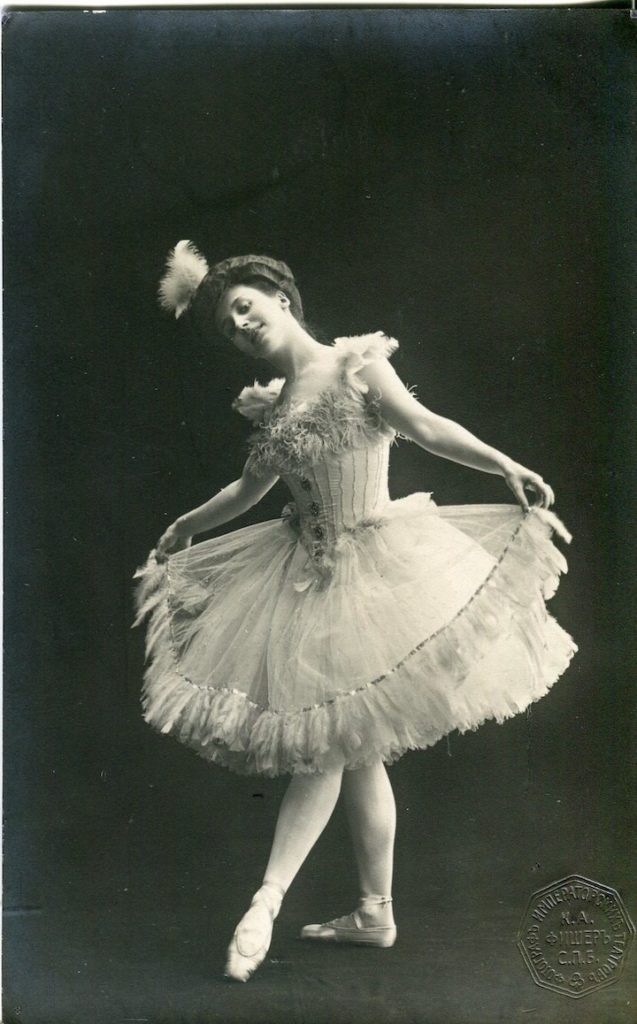
Lydia Georgievna Kyaksht (also Kyasht) is seen here, circa 1907, as Princess Florine for the Bluebird pas de deux in the third act of Marius Petipa’s The Sleeping Beauty (1890). The duet’s subject is a visit by an enchanted king in the guise of a bluebird, who hopes to teach the princess to fly away with him.
Instead of ballet’s now familiar chignon, Kyaksht has a soft Gibson Girl-style coiffeur. She is costumed in a full, delicately detailed tutu, known to be light blue in colour, and trimmed with feathers, all according to Ivan Vsevolozhsky’s original 1890 designs for the ballet. In line with the francophile tastes of the imperial Russian ballet, the costumes for Florine and her bluebird suitor evoke the baroque style typical of a court ballet in the reign of Louis XIV.
The pose Kyaksht strikes recalls a moment of pause, perhaps for the start of a diagonal choreographic sequence. Alternately, the tilted angle of her head as she gazes into the camera, as well as the way she holds out of the top layer of her skirt, might just indicate an intention to display her costume.
Around this time, the ballerina would dance this duet opposite either Samuil Andrianov (a teacher of George Balanchine’s) or Vaslav Nijinsky, who made his debut as Bluebird opposite Kyaksht.
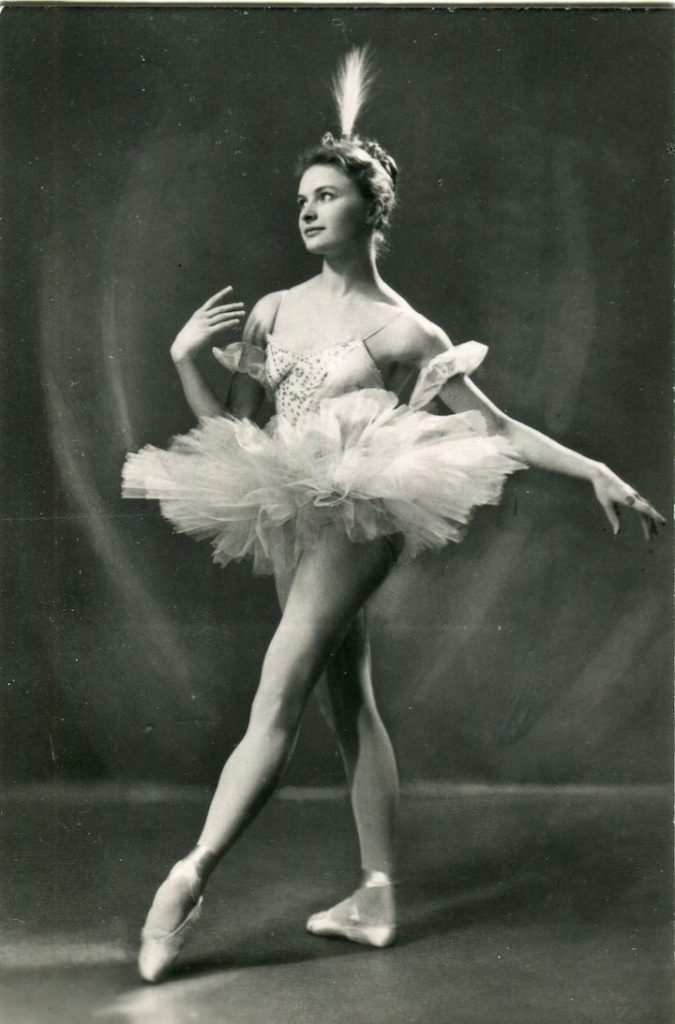
This Leningrad-issued card is dated September 16, 1964, the year Alla Ivanovna Sizova first danced The Sleeping Beauty’s central role of Aurora. However, in this studio shot, she is wearing a costume designed by Simon Virsiladze for Princess Florine in Konstantin Sergeyev’s 1952 staging of the ballet for the Kirov.
Sizova’s Florine pose is similar to Kyaksht’s from the waist down, but reveals a more tightly blocked and pointed toe shoe. For this 1960s Florine, more than 50 years after Kyaksht’s, the ballerina is costumed in a way that leaves her legs and arms more exposed and free. Positioned as if to start her solo variation and wearing a shorter, stiffer, more sharply gathered tutu, with a trimmer bodice, Sizova, with her softly upswept hairstyle and bird-of-paradise-like plume head ornament, looks away from the camera off into the storybook realm of her character.

